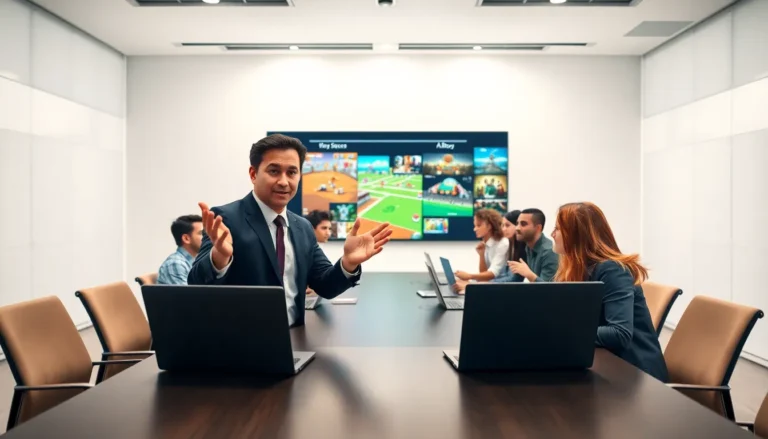Invoicing as a freelancer might seem simple, fill out a few blank lines, send it off, and voilà. But hold on. If it were that easy, we wouldn’t be here dissecting the art of invoicing. Think of it as sending a love letter to your clients, except in this case, the romance is all about money. You need to ensure your invoice says “I’m charming and professional,” not “Oops. I forgot to charge you for half of what I did.” This guide will walk you through everything you need to know, from the basics to best practices, so you can bill confidently and get those checks rolling in.
Table of Contents
ToggleUnderstanding Invoicing Basics

In the dynamic world of freelancing, understanding invoicing basics is fundamental. Freelancers often juggle multiple clients and projects. How they handle invoicing can set the tone for their professional reputation and cash flow.
Importance Of Invoicing For Freelancers
Invoicing serves as the formal request for payment. It’s the key that unlocks the door to financial stability. A well-structured invoice not only communicates professionalism but also clarifies the details of the services rendered. It’s essential for managing cash flow and maintaining healthy client relationships. Without proper invoicing, freelancers risk leaving money on the table.
Common Invoicing Terms You Should Know
Familiarizing oneself with common invoicing terms can demystify the process. Terms like due date, net terms, itemized list, and payment terms are crucial. Understanding these can help freelancers articulate exactly what they need from clients while avoiding any miscommunication.
Essential Elements Of An Invoice
Creating a solid invoice is about more than just filling in the blanks. Each invoice should be professional and clear. Here’s how to ensure your invoice includes all the essential elements.
Setting Up Your Invoice Template
Before diving in, set up a consistent invoice template. This will save time and enhance professionalism. Include your logo, business name, and contact information at the top. Consider adding fields for client details, invoice number, and date. A pre-made template can do the heavy lifting, allowing you to customize it per project while maintaining a cohesive brand look.
Designing A Professional Invoice
Design isn’t just about looking good: it’s about functionality. A cluttered invoice confuses clients. Use clear headings, bullet points, and white space to create a clean layout. Ensure the font is readable and the colors match your brand. Don’t underestimate the power of a polished design, it can communicate competence and stability.
Invoicing Process Steps
Once the basics are laid out, the invoicing process can begin. It’s more than just hitting send.
How To Create An Invoice
Crafting an invoice involves several steps: start by listing the services provided, detail the hours worked, and include any expenses. Assign a unique invoice number for tracking. Don’t forget to clearly state the total amount due, including applicable taxes. Double-check for accuracy before sending. A more detailed invoice reduces back-and-forth with clients.
Sending Invoices To Clients
Now comes the big moment, sending the invoice. Do it via email unless specified otherwise by the client. Attach the invoice as a PDF to maintain formatting. Craft a polite message and briefly summarize. A clear call-to-action, like stating the due date, can also encourage timely payments.
Managing Payments And Follow-Ups
In the world of freelancing, invoicing doesn’t end with sending the bill. The management of payments is just as crucial.
Tracking Payments And Overdue Invoices
Tracking payments can feel like playing hide and seek. Use invoice tracking features in your software to keep tabs on which invoices have been paid. Set reminders for overdue invoices. This ensures that nothing slips through the cracks and helps freelancers stay on top of their finances.
When To Follow Up On Payments
Following up on payments requires a balance of professionalism and persistence. Typically, a gentle nudge a week after the due date is appropriate. Keep communication friendly and constructive. Reiterate the invoice details and ask if they have any questions. Sometimes clients forget, and a simple reminder can work wonders.
Best Practices For Freelance Invoicing
To ensure a smooth invoicing process, adopting best practices can make a significant difference.
Avoiding Common Invoicing Mistakes
Common mistakes include unclear invoices and missing due dates. Always be clear about payment terms upfront and attach the invoice promptly. Inconsistencies in client information can also delay payments. Regularly updating client details is a simple way to avoid miscommunication.
Tools And Software For Efficient Invoicing
Leveraging invoicing software can streamline the process. Tools like FreshBooks and QuickBooks handle invoicing seamlessly, allowing freelancers to create, send, and track invoices effortlessly. Some tools even integrate time tracking and expense management. Using technology liberates freelancers, enabling them to focus more on their craft than administrative tasks.


